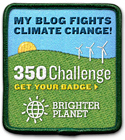primary use: general ink/paint application
overall opinion: Good
advantages: easy to cut, inexpensive, the blocks are available in a couple of sizes, they are supposedly easier to carve than linoleum.
disadvantages: they crumble if you cut thin forms, the material splits easily if you are not careful when holding the cut pieces.



misellaneous: they're made of an eraser-like high density rubber and take paint very well. You can cut the block with an exacto knife (or is it x-acto?) but I suggest making sure you cut through the block completely before attempting to remove the cut-out forms. If you're looking for an inexpensive but creative way to apply painted letters (or other solid forms) to a surface, these blocks are a good option. The above examples were taken from the letters I used to create the cover typography for "ink snacks".
more thoughts on materials:
...prismacolor markers
...Staedtler pigment liner
...sponges
...coming soon (sketch pencils, espresso)












No comments:
Post a Comment